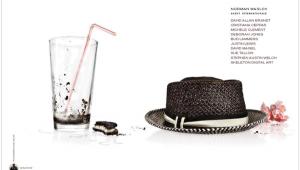Web marketing is definitely a great source and potential business marketing marketing strategy. Unlike print and broadcast media web marketing is very broad that you can reach your target market from around the world. Social medias, micro blogging and video hosting are some of the platforms that allow web marketing. But, everything will be useless I guess if you don't know what your business and product is, specially your brand name. It is important that you provide your business a unique and creative name that will introduce to the mass market. Seek for naming firm, if you want perfect advice from branding experts.
Websites: Best Practices; Marketing, Presentation, And Clients Page 2
• You must have a call to action. This action will vary according to what you want the visitor to do, but it usually will be “buy this now” or “order this now.” A call to action must not only tell the visitor what to do, but when to do it.
• If your homepage contains dated information, such as gallery openings, be sure to keep it current. Keep adding to this so it looks like you’re busy.
• Have buttons and text links in the same place on every page, and make them easy to find. You need text links so the search engines can index your site. If you only have graphic buttons for links, the search engines can’t find your other pages. Arrange the buttons in the order of importance. Have the button for the items you are selling in front of your bio or contact buttons.
• At the bottom of the page, put your copyright information and all contact information (e-mail, mailing address, phone number, etc.). By having your contact information on each page, you’re easy to contact and this builds trust with your visitor.
• Don’t have an intro page. Those are pages where the visitor is being asked to click a button to be taken to the website.
• Keep text short and easy to scan. Have short sentences and short paragraphs, and bullet any list you have. You can also bold certain keywords, but don’t overdo the bolding or people will ignore them.
• Avoid Flash sites. As a rule, they load slowly and search engines can’t index them. Another photographer and I were arguing this point on a photographer’s forum recently. It boiled down to him wanting a Flash site because it had “sizzle and a wow factor.” I commented that a good photographer who had solid images on his site didn’t need “sizzle and a wow factor” as the images would speak for themselves. He never responded.
 |
|
|
SB: What are the best ways to create an effective, search engine-friendly website with Search Engine Optimization (SEO)?
Ian L. Sitren: I leave it to the designers of the website and just fill in the blanks that I need to fill in. Not that long ago I thought “SEO” was a rock group, turns out that’s REO Speedwagon! If you are trying to be a website designer, SEO specialist, and photographer, the odds are that you are going to fail at all three. There is no way you are going to keep up with the technology to do all of it, with very rare exception.
Aside from that, if you think you can depend on customers to come flocking to hire you just because of your website and SEO, you are going to be very lonely. You are not going to be successful as a photographer until you get back out from behind your computer and into the real world and meet people and shake hands. Your odds of getting work will skyrocket with a great business card that you actually hand to someone, sending them to your website that really works.
Paul S. Bartholomew: I find it difficult to have a website that serves as a highly polished presentation of my work and as a magnet for search results. Good search results involve a lot of small things that add up. Text is very important; the more keyword-rich text you have, the better off you are. But does it look good? How much compromise is involved?
Here is my solution: I have two websites. One is for a strong presentation and the other is HTML with text for search engine results. This was decided when I went with a liveBooks website but was afraid of losing my high Google rankings. I kept the old website even though it’s rough looking, but people have the option to click over to my nicer website. This works for now but I’m currently looking at other options. My marketing materials only mention my liveBooks website; my SEO-friendly website gets found by people stumbling upon it in a search.
Brad Mangin: First, you need a plan and marketing strategy to decide what you are trying to sell and what search term you want to show up under. Do you want to be “San Francisco wedding photographer”? Then you need to gear all your metadata to those search terms. You need to have this in the copy in your title bar. You need to have an HTML website, or a very good Flash site that has a mirrored (and legal) HTML site like liveBooks. Because SEO is so important to me I have both. For example, liveBooks powers my portfolio site (www.manginphotography.com) and then I have an HTML blog site (www.manginphotography.net) that promotes my archive, powered by PhotoShelter. My goal is to show up high in Google when you search for “sports photographer” and “sports photography.” Google loves text; this is why sites that incorporate lots of text—like a blog—always show up high in search results.
 |
|
|
SB: How do you create updated and interesting content for prospective clients?
Brad Mangin: If you are continually shooting new stuff, then you are always creating new content that you can write about on a blog, or update on your portfolio site. Google can tell when you update. Google loves to see activity. It shows them that your site is a living, breathing thing that is relevant in the community. I update my blog at least three times a week and my portfolio site a few times a month.
Jeff Colburn: In a perfect world, you would put new content on your site weekly, but once or twice a month is fine. Search engines like it when you add new content frequently. As a photographer, the best thing you can do is to add new images and articles that would be of interest to your visitors. If you can’t write, or just don’t want to, visit the many free article sites, like www.ezinearticles.com or www.ideamarketers.com, and use some of their free photography articles. Articles don’t need to be long; an article that’s 200-300 words in length is fine. If you are very active, and have gallery openings, teach photo classes or retreats, write articles for magazines, etc., then you can have an “Activities” listing to keep your visitors informed about your goings on and at the same time you’d be adding new content.
Ian L. Sitren: You make your photography more interesting by shooting more interesting things and people. Be different! So many times I have passed by a kids’ soccer game and seen dozens of parents and “photographers” running up and down the sidelines, all shooting in the same direction with the same cameras with the same lenses. If you do not do something different or have something to add, go find something else. If you are all shooting the same thing then it is just a commodity like buying at a warehouse store, paying less for the most you can get. Remember that photography is supposed to be creative!
Partial List Of References And Resources
• www.livebooks.com
• www.photoshelter.com
• www.dripbook.com
• www.clickbooq.com
• www.webmonkey.com
• www.htmlgoodies.com
• www.anybrowser.com
• http://watson.addy.com
• www.smugmug.com
• www.shutterfly.com
• www.flickr.com
• www.zenfolio.com
• www.dogbark.com
• www.go-seo.com
- Log in or register to post comments


As more and more users replace traditional desktop internet browsing with mobile browsing, interactive marketers will be able to take advantage of more precise geo margeting functionality. Thanks.
Regards,
Zeno International UK

The day long workshop event will focus on strategies for creating exceptional content to engage audiences and promote business growth. help with resume
















































